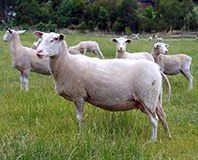Read the latest information on
Foot-and-mouth disease
 Have you ever wanted to know the health status of your flock or herd, not to mention what impact that status could have on your farm management practices, your biosecurity plan and, most importantly, your profit margin?
Have you ever wanted to know the health status of your flock or herd, not to mention what impact that status could have on your farm management practices, your biosecurity plan and, most importantly, your profit margin?
The health of your animals can sometimes be difficult to gauge, especially when it comes to conditions which only become apparent post-slaughter. Earlier this year it became possible to access data from the National Sheep Health Monitoring Project (NSHMP) through Meat & Livestock Australia’s Livestock Data Link (LDL) portal.
Dr Rob Barwell, Animal Health Australia’s acting Executive Manager, Biosecurity and Product Integrity Services, notes that the sheep industry loses around $120 million each year to health conditions which limit productivity and increase processing waste.
“Around three quarters of that loss is felt by primary producers,” Dr Barwell explained.
“It can be challenging to identify which conditions, if any, pose a threat to both your livestock and your profitability. Gathering data from programs such as NSHMP is an easy way to build a clear understanding of what is eating into your profit margins at the abattoir.”
Through LDL, you can view NSHMP data from your properties, arranged by Property Identification Code, and use that data to make informed decisions about your animal health and welfare management strategies, targeting those conditions which have been found in your flock for maximum effect.
“While NSHMP data is only available to producers who send their sheep to a participating abattoir, all livestock producers can benefit from gathering data about the health of their livestock,” says Dr Barwell.
“Keeping comprehensive records of livestock movements, health treatments and mortalities will help you to identify common conditions on-farm and trace common causes.”
Sound monitoring and recording practices, even when nothing is detected, can also help in the event of an emergency animal disease outbreak, allowing you to quickly identify signs and symptoms which are unusual on your property and isolate animals and areas which may have been exposed.
These strategies can be worked into everyday farm management practices, for more information visit the Farm Biosecurity website
For more on the National Sheep Health Monitoring Project, visit Animal Health Australia
For more on Livestock Data Link, visit Meat & Livestock Australia